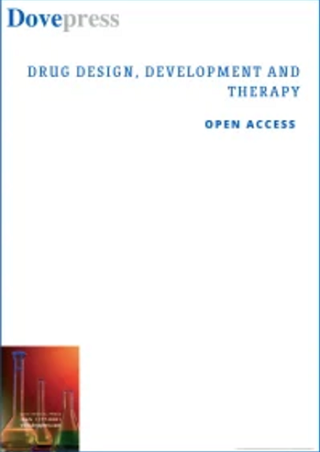通过硅学研究和体外验证确定婴儿血管瘤的潜在治疗方法
IF 4.7
2区 医学
Q1 CHEMISTRY, MEDICINAL
引用次数: 0
摘要
导言:婴儿血管瘤(IH)是一种常见的良性血管肿瘤,约占婴儿总数的 5-10%。其潜在的发病机制仍是一个谜,目前的治疗方法效果有限。我们的研究旨在通过转录组学、计算药物再利用方法发现潜在的IH相关治疗方法:方法:利用基因表达总库(Gene Expression Omnibus)中的IH特异性数据集GSE127487,我们确定了差异表达基因(DEGs),并进行了加权基因共表达网络分析(WGCNA)。随后,我们构建了蛋白质-蛋白质相互作用(PPI)网络,以获得前 100 个枢纽基因。候选药物来自连接图(CMap)和比较毒物基因组学数据库(CTD):我们的分析发现了1203个DEGs和1780个mRNAs的重要模块与IH密切相关。这些基因主要富集在 PI3K/AKT/MTOR、RAS/MAPK 和 CGMP/PKG 信号通路中。在创建了重叠基因的 PPI 网络后,我们筛选出了前 100 个中心基因。最终,通过 CMap 和 CTD 数据库确定了 44 种无毒药物。12种分子靶向药物(贝利诺司他、chir 99021、达沙替尼、恩替诺司他、帕诺比诺司他、西罗莫司、索拉非尼、舒尼替尼、沙利度胺、U 0126、沃利诺司他和沃替曼宁)可能成为IH治疗的潜在候选药物。此外,体外实验表明,恩替诺司他、索拉非尼、达沙替尼和西罗莫司可限制血癌细胞的增殖和迁移,并启动细胞凋亡,从而凸显了它们的潜在治疗价值:我们的研究发现,IH的致病机制可能与PI3K/AKT/MTOR、RAS/MAPK和CGMP/PKG信号通路密切相关。此外,我们还在预测的药物中发现了十二种分子靶向药物,这些药物有望成为治疗婴儿血管瘤的候选药物:体外研究证实恩替诺司他、索拉非尼、达沙替尼和西罗莫司可抑制HemEC细胞增殖并诱导细胞凋亡。关键词:婴儿血管瘤 恩替诺特 西罗莫司 中枢基因 转录组 生物信息学本文章由计算机程序翻译,如有差异,请以英文原文为准。
Identification of Potential Therapeutics for Infantile Hemangioma via in silico Investigation and in vitro Validation
Introduction: Infantile Hemangioma (IH) is a prevalent benign vascular tumor affecting approximately 5– 10% of infants. Its underlying pathogenesis remains enigmatic, and current therapeutic approaches show limited effectiveness. Our study aimed to discover potential IH-associated therapeutics through a transcriptomic, computational drug repurposing methodology.
Methods: Utilizing the IH-specific dataset GSE127487 from the Gene Expression Omnibus, we identified differentially expressed genes (DEGs) and conducted weighted gene coexpression network analysis (WGCNA). Subsequently, a protein-protein interaction (PPI) network was constructed to obtain the top 100 hub genes. Drug candidates were sourced from the Connectivity Map (CMap) and Comparative Toxicogenomics Database (CTD).
Results: Our analysis revealed 1203 DEGs and a significant module of 1780 mRNAs strongly correlated with IH. These genes were primarily enriched in the PI3K/AKT/MTOR, RAS/MAPK, and CGMP/PKG signaling pathway. After creating a PPI network of overlapping genes, we filtered out the top 100 hub genes. Ultimately, 44 non-toxic drugs were identified through the CMap and CTD databases. Twelve molecular-targeting agents (belinostat, chir 99021, dasatinib, entinostat, panobinostat, sirolimus, sorafenib, sunitinib, thalidomide, U 0126, vorinostat, and wortmannin) may be potential candidates for IH therapy. Moreover, in vitro experiments demonstrated that entinostat, sorafenib, dasatinib, and sirolimus restricted the proliferation and migration and initiated apoptosis in HemEC cells, thereby underscoring their potential therapeutic value.
Conclusion: Our investigation revealed that the pathogenic mechanism underlying IH might be closely associated with the PI3K/AKT/MTOR, RAS/MAPK, and CGMP/PKG signaling pathways. Furthermore, we identified twelve molecular-targeting agents among the predicted drugs that show promise as therapeutic candidates for IH.
Plain Language Summary: Transcriptomic analysis used to discover potential therapeutics for Infantile Hemangioma (IH).
Key IH-related pathways: PI3K/AKT/MTOR, RAS/MAPK, and CGMP/PKG signaling identified.
Identified 44 non-toxic drugs as potential IH therapies via CMap and CTD.
Twelve molecular agents show potential as IH therapy candidates.
In vitro studies confirmed entinostat, sorafenib, dasatinib, and sirolimus inhibit HemEC cell proliferation and induce apoptosis.
Keywords: infantile hemangioma, entinostat, sirolimus, hub gene, transcriptome, bioinformatics
Methods: Utilizing the IH-specific dataset GSE127487 from the Gene Expression Omnibus, we identified differentially expressed genes (DEGs) and conducted weighted gene coexpression network analysis (WGCNA). Subsequently, a protein-protein interaction (PPI) network was constructed to obtain the top 100 hub genes. Drug candidates were sourced from the Connectivity Map (CMap) and Comparative Toxicogenomics Database (CTD).
Results: Our analysis revealed 1203 DEGs and a significant module of 1780 mRNAs strongly correlated with IH. These genes were primarily enriched in the PI3K/AKT/MTOR, RAS/MAPK, and CGMP/PKG signaling pathway. After creating a PPI network of overlapping genes, we filtered out the top 100 hub genes. Ultimately, 44 non-toxic drugs were identified through the CMap and CTD databases. Twelve molecular-targeting agents (belinostat, chir 99021, dasatinib, entinostat, panobinostat, sirolimus, sorafenib, sunitinib, thalidomide, U 0126, vorinostat, and wortmannin) may be potential candidates for IH therapy. Moreover, in vitro experiments demonstrated that entinostat, sorafenib, dasatinib, and sirolimus restricted the proliferation and migration and initiated apoptosis in HemEC cells, thereby underscoring their potential therapeutic value.
Conclusion: Our investigation revealed that the pathogenic mechanism underlying IH might be closely associated with the PI3K/AKT/MTOR, RAS/MAPK, and CGMP/PKG signaling pathways. Furthermore, we identified twelve molecular-targeting agents among the predicted drugs that show promise as therapeutic candidates for IH.
Plain Language Summary: Transcriptomic analysis used to discover potential therapeutics for Infantile Hemangioma (IH).
Key IH-related pathways: PI3K/AKT/MTOR, RAS/MAPK, and CGMP/PKG signaling identified.
Identified 44 non-toxic drugs as potential IH therapies via CMap and CTD.
Twelve molecular agents show potential as IH therapy candidates.
In vitro studies confirmed entinostat, sorafenib, dasatinib, and sirolimus inhibit HemEC cell proliferation and induce apoptosis.
Keywords: infantile hemangioma, entinostat, sirolimus, hub gene, transcriptome, bioinformatics
求助全文
通过发布文献求助,成功后即可免费获取论文全文。
去求助
来源期刊

Drug Design, Development and Therapy
CHEMISTRY, MEDICINAL-PHARMACOLOGY & PHARMACY
CiteScore
9.00
自引率
0.00%
发文量
382
审稿时长
>12 weeks
期刊介绍:
Drug Design, Development and Therapy is an international, peer-reviewed, open access journal that spans the spectrum of drug design, discovery and development through to clinical applications.
The journal is characterized by the rapid reporting of high-quality original research, reviews, expert opinions, commentary and clinical studies in all therapeutic areas.
Specific topics covered by the journal include:
Drug target identification and validation
Phenotypic screening and target deconvolution
Biochemical analyses of drug targets and their pathways
New methods or relevant applications in molecular/drug design and computer-aided drug discovery*
Design, synthesis, and biological evaluation of novel biologically active compounds (including diagnostics or chemical probes)
Structural or molecular biological studies elucidating molecular recognition processes
Fragment-based drug discovery
Pharmaceutical/red biotechnology
Isolation, structural characterization, (bio)synthesis, bioengineering and pharmacological evaluation of natural products**
Distribution, pharmacokinetics and metabolic transformations of drugs or biologically active compounds in drug development
Drug delivery and formulation (design and characterization of dosage forms, release mechanisms and in vivo testing)
Preclinical development studies
Translational animal models
Mechanisms of action and signalling pathways
Toxicology
Gene therapy, cell therapy and immunotherapy
Personalized medicine and pharmacogenomics
Clinical drug evaluation
Patient safety and sustained use of medicines.
 求助内容:
求助内容: 应助结果提醒方式:
应助结果提醒方式:


